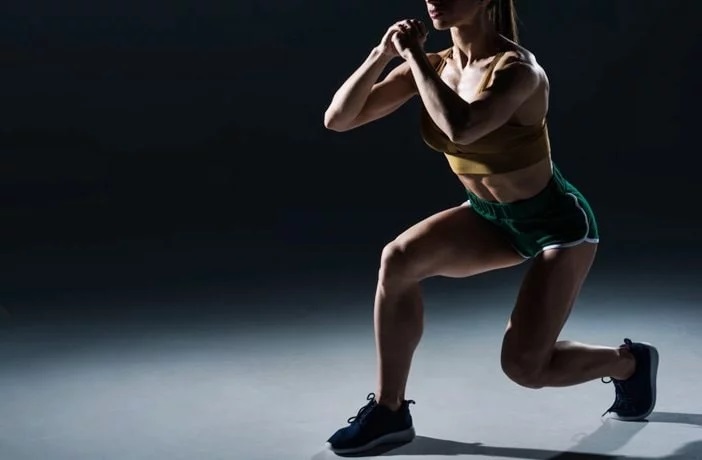Having strong legs and glutes is very important for both athletes and amateurs. As we know, the thighs are a fundamental part of our bodies that should not be overlooked in any training routine.

If you want to tone your legs, we recommend that you practice dynamic and static lunges. Lunges are full-body exercises that engage the abdominal muscles at the same time as the legs.
In this article, we will explain the differences between static and dynamic lunges. In addition, you will learn how you can benefit from these exercises by performing them differently.
Dynamic and Static Lunges: The Importance of Variability
The body has an amazing ability to adapt to exercise. Once this happens, the exercise is no longer as effective as it was before. To avoid that, it is very important to change your routine from time to time.
A great way to avoid monotony and boredom when training, as well as being important for staying motivated, is to include dynamic and static lunges.
As we will see below, although both exercises activate and work the same muscle groups, each type of lunge puts more emphasis on certain areas.
Dynamic and Dynamic Lunges Within Your Training Routine
As mentioned above, lunges affect both the muscle development of the legs and the strengthening of our hips.
In most cases, lunges involve the following joints:
- Knee Joints – Your knees are deeply involved when you perform the exercise because your quads tighten and your knees bend.
- Hip Joints: The hips engage the gluteal muscles and the femoral area, providing stability.
- If we observe the exercise closely, the muscles involved are the same as when we do a squat. However, when moving forward or backward, lunges allow for greater gluteal and femoral activation.
- The muscles around our hips, primarily the adductors and abductors, are often overlooked in training routines. Despite their great importance for our body, since the stability of your body depends on them, these muscles are neglected during workouts.
- To enrich our training routines, you must understand how dynamic and static lunges differ from each other.
o Static Lunges Vs. Dynamic
- To analyze the two types of lunges, we will explain the differences when executing the exercise, as well as the muscles that are involved in each.
Differences in Execution
When you lower your body into the static lunge, the energy is concentrated in the gluteal muscles as well as the quadriceps and hamstrings.
This will allow these muscles to get stronger. As you can feel when you perform the lunge, most of the weight of your body falls on the leg in front of you.
Meanwhile, the back leg provides support and balance to keep your body aligned and grounded.
When you go up again, the gluteal muscles, hamstrings, and quadriceps work concentrically, allowing the thighs to stretch as they return to the starting point. To lift your body, the leg towards your back contracts and your gluteal muscles take most of the tension.
On the other hand, dynamic lunges work in a slightly different way. While the descent works exactly the same as the static lunge, lifting your body is slightly different.
While static lunges are primarily dedicated to the gluteal muscles, dynamic lunges are dedicated to the quadriceps.
Many professional trainers even say that static lunges are similar to single leg squats. As you climb, you must strain your quads to bring your feet back together.
Dynamic lunges should be executed in a linear direction, always forward and keeping the knee above the ankle to avoid injury.
Differences Related to Muscle Involvement.
Dynamic and static lunges involve the same muscle groups. However, depending on the type of lunges, more emphasis will be placed on one area or another.
- Static lunges – When lowered, the front leg works harder, especially the gluteal muscles and quadriceps. When climbing, the front leg is also the one that works the hardest.
- Dynamic Lunges – The muscles that engage when descending are similar to those used in the static lunge. However, when climbing, the gluteal muscles in both legs will be the hardest working muscles.












